The Tree of Life – Part III
The first encounter we have with the Tree of Life is in the Garden of Eden which is described in the books of Genesis, Moses and Abraham. In Moses 3:9 we are told that God created many trees in Eden, but Moses makes particular mention of only two trees, being the Tree of Knowledge of Good and Evil and the Tree of Life. In Moses 3:16-17 we find that of all the trees the only tree which was forbidden them was the Tree of Knowledge of Good and Evil, which implies that as of that moment they were not yet forbidden from partaking of all the benefits of the fruit of the Tree of Life. Once Adam and Eve partake of the fruit of the Tree of Knowledge they are kicked out of The Garden and Moses 4:31 explains that the angels placed as sentinels were placed primarily to protect the Tree of Life. Alma 42:4-8 and Alma 12:24-27 clarify that if they had been allowed to partake of the fruit of the Tree of Life at that time they would have become immortal before their time and would have forgone the probationary period appointed for men to repent of their sins.
There are many references to The Tree of Life in Proverbs (Prov 3:13-20, Prov 11:24-30, Prov 13:12 & Prov 15:1-5), which describe the Tree of Life as the fulfillment of our deepest desires and also as prudence and wisdom.
In Revelation 2:7, Christ promises the fruit of the Tree of Life to them that overcome, In Revelation 22:14 the Tree of Life is promised to all those who keep his commandments. In my opinion, however, the most interesting reference to the Tree of Life in the Bible comes from Revelation 22:1-2 “And he shewed me a pure river of water of life, clear as crystal, proceeding out of the throne of God and of the Lamb. In the midst of the street of it, and on either side of the river, was there the Tree of Life, which bare twelve manner of fruits, and yielded her fruit every month: and the leaves of the tree were for the healing of the nations.” In Ezekiel 47:12 we are given a very similar vision of a tree whose leaves would be for medicine.
I will get to the symbolism of the fruit later when we examine Lehi’s dream but for now I would like to focus on the leaves which are for the “healing of the nations”. If we consider the tree as a spiritual symbol and the healing as spiritual healing what we are talking about here is the Grace of Christ. The word “grace” is mentioned over a hundred times in our scriptures mostly in the writings of the Apostle Paul and in the Book of Mormon. Grace refers to the redeeming power of the Atonement which even “after all we can do” is still the most important element in our salvation or redemption (2 Nephi 25:23).
As the Apostle John pointed out in his first epistle “If we say that we have no sin, we deceive ourselves, and the truth is not in us.” (1 John 1:10) and the Apostle Paul taught in Romans 3:23 “For all have sinned, and come short of the glory of God”. It is because of our imperfections and shortcomings that the Book of Revelation describes the righteous not as those who have never sinned, but rather as those whose robes have been made white in the blood of the lamb (Rev 7:14).
One of the most beautiful and complete allegories of The Tree of Life comes from Lehi’s vision in The Book of Mormon. We are all, of course, quite familiar with this powerful vision and the broad sweep of mortal existence, struggle and reward represented in the symbols of the iron rod, the mist of darkness, the forbidden paths, the river of filthy water, the great and spacious building, the fountain of living water, the tree of life and the fruit of the tree. In this analysis I will focus on the Tree of Life, its fruit and the rod of iron.
In 1 Nephi 8, the prophet Lehi sees a great field and at the beginning of the dream, he establishes that the central and most important symbol in this dream is the Tree of Life whose fruit was “desirable to make one happy” (1 Nephi 8:10). When Nephi requests an explanation of the vision, the angel begins by asking Nephi if he believes that his father saw the Tree of Life (1 Nephi 11:4). It is interesting to point out that he doesn’t ask if he believes if his father saw the vision, but more particularly if believes that his father saw the tree.
In 1 Nephi 11:7 the angel begins by linking a witness of the tree to a witness of Our Savior. In 1 Nephi 11:9-33 the vision of the Tree of Life is interspersed with visions of Christ’s birth, ministry, miracles, teachings and death. If there is any doubt regarding the deeper symbol of the Tree of Life Alma 5:34 states “Yea, he saith: Come unto me and ye shall partake of the tree of life; yea ye shall eat and drink of the bread and the waters of life freely”. In this passage we see quite clearly that the tree of life is equivalent to the bread of life (see John 6:48) and living waters (see John 4:14). In fact, Elder Jeffrey R. Holland taught “The images of Christ and the tree [are] inextricably linked…At the outset of the Book of Mormon, … Christ is portrayed as the source of eternal life and joy, the living evidence of divine love, and the means whereby God will fulfill his covenant with the house of Israel and indeed the entire family of man, returning them to all their eternal promises” (Christ and the New Covenant [1997], 160, 162).
We all know that Joseph Smith described Section 88 as an olive leaf, but in the introduction to Section 88 in our Doctrine and Covenants we read that he said more than that. He described it as an “olive leaf … plucked from the Tree of Paradise”. Is this one of the leaves that John in Revelation described as intended “for the healing of the nations” and Ezekiel described as “medicine”?. Section 88, is powerful, it covers a broad variety of themes and appears to be dealing more with eschatological themes than with christology or Grace it does also touch on topics of eternal life and a reward for the just.
However, I think it is important to point out that the iron rod and the Tree of Life are two separate symbols in Lehi’s vision. The rod of iron is crucial in this life to help us navigate the darkness of confusion and temptation. But salvation comes through Christ. In other words, pages with words on them don’t possess any mystical power to bless and cleanse us without effort on our part. It is only by reading them, meditating on them and living their teachings that we reach Him of whom they speak. Section 88 is a leaf “for the healing of the nations” in the sense that its subject matter is He whose suffering in Gethsemane makes it possible for us to be forgiven of our sins.
The fruit of the tree is described as “the greatest of all the gifts of God” (1 Nephi 15:36). In Doctrine and Covenants 14:7 we learn that the greatest of all gifts is Eternal life. Here we can perceive an interesting interaction between the leaves as described in Revelation and Ezekiel and the fruit as described in Lehi’s vision.
Revelation 21:27 teaches that “no unclean thing” can enter the Kingdom of Heaven, the Apostles John and Paul, The Book of Mormon and our own consciences teach us that we have all sinned. This is the great dilemma at the root of Christianity!! If we fulfill the measure of our creation only by returning and living with God how can we who are imperfect return? The answer comes in 2 Nephi 25:23 where Nephi explains that the reason for his intense labor to get us to believe in Christ and be reconciled unto him is that after all we can do we are saved by His grace. By developing a living and active faith sufficient to be saved, by making our garments white in the blood of the lamb we who are now imperfect can enter that realm where no unclean thing can enter and partake of that which is delicious above all, delightful and joyful to the soul.
So how do we develop that deep and abiding faith? We live in a world of sin and temptation. Personal trials, mockery, pain, frustration and doubt can all cloud our vision and sometimes things just don’t make sense. While it is a fair and basic assumption that most LDS believe in Christ, if we are fully honest with ourselves most of us would at some point in our life answer “Lord, I believe; help thou mine unbelief” (Mark 9:24).
In the April 2011 General Conference Elder Bednar compared developing a testimony to the gradual sunrise. We sometimes have to be patient, but if we are diligent and obedient the testimony will arrive as surely as the sun will rise. I’ve already mentioned holding fast to the rod of iron, which symbolizes the word of God in all its manifestations. I think that Alma’s lecture to the poor and humble that had been rejected of the Zoramites is instructive on this point. In this lecture Alma compares faith to a little seed, a seed that we must plant in our hearts (which hearts must be humble and receptive). As we nurture, care for and water the plant we will begin to feel it grow, as we feel it grow we will know that it is good and this will strengthen our faith. He concludes this chapter by promising that “… if you will nourish the work, yea, nourish the tree as it beginneth to grow, by your faith with great diligence, and with patience, looking forward to the fruit thereof, it shall take root, and behold it shall be a tree springing up unto everlasting life, and because of your diligence and your faith and your patience with the word in nourishing it, that it may take root in you, behold by and by ye shall pluck the fruit thereof, which is most precious, which is sweet above all that is sweet, and which is white above all that is white, yea and pure above all that is pure; and ye shall feast upon this fruit even until ye are filled, that ye hunger not, neither shall ye thirst” (Alma 32:41-42).
Alma’s comparison of faith to a seed which grows into a tree (The Tree?) is an apt one. You can’t force a tree to grow overnight, you have to be patient and give it time. On the other hand, you can’t neglect it either, nor can you forgo giving it water for several months and expect to compensate by giving months’ worth of water all at once. You must be patiently diligent and diligently patient, daily keeping the commandments, meditating and seeking The Spirit.
In the April 2013 General Conference, Elder Jeffrey R. Holland gave a talk entitled “Lord, I Believe” in which he stated that when moments of doubt, fear or troubling times come we should hold fast to the ground which we have already won. This talk has been criticized in various forums on the premise that in epistemic terms there is no other field in which the correct attitude toward contrary evidence is to simply and dogmatically hold-fast to what we believe instead of examining contrary evidence. An equity analyst with a Buy recommendation on a stock should seriously consider the risks to that stock, an academic who has published in favor of one theory should seriously consider his premises with the discovery of new evidence in order to maintain his/her intellectual honesty, a physician who has just received study results which contradict his/her previous diagnosis shouldn’t “hold-fast” to the ground that he/she has already won, but should re-consider.
However, if we view testimony in less of an epistemic sense and more in terms of a necessary relationship then it does make sense to hold-fast to that which you have gained and to continue building it daily. Relationships require investments of time and effort.
In a similar vein, Elder Uchdorft’s recent admonition (October 2013) to “doubt your doubts before you doubt your faith” would be an irresponsible reaction to contrary evidence in academic and scientific inquiry. But actually makes a lot of sense in terms of preserving a vital relationship as all relationships are based on trust.
Whether there is an actual Deity with a physical, material and ontological existence and who also conforms to all the LDS teachings (anthropomorphic, personal, benevolent, interventionist, revelatory etc) or whether mankind created God in his/her own image (Dostoyevsky’s Ivan claims that we resemble the satan we’ve created in our own image more than the God we’ve created in our own image), God and religion represent (at least in their idealized symbolic form) an ideal with which we can strive to commune. Regardless of whether the God you believe in is the personal, anthropomorphic God of LDS theology or one of the many different types Deities in which humanity finds meaning and solace, I believe it is in our best interest to have a strong relationship with that which is most noble within us. In this sense Alma’s teachings to the Zoramites where he relates faith to planting a seed which eventually grows into the Tree of Life, is instructive as to how we can build our relationship with God, with our highest internal essense and with others. In a sense we can build our own social, emotional or psychological heaven on earth by reaching out and loving others (two great commandments) or our own social, emotional and psychological hell through resentment, anger, isolation and pride (great and spacious building, Edom, Babylon, Idumea etc). Just as plants are grown not by giving one month of water all at once, in relationships a phone call once a day for a month is more valuable than 30 phone calls in one day. Spending five minutes a day (over an extended time period) laughing together with a spouse, child, parent, sibling, co-worker or friend is more valuable than spending an entire 24 hours together in intense and uninterrupted interaction.
In this same sense, by nourishing our seed of faith into a mighty tree on a daily basis and by holding fast to the rod of iron, we can commune with Deity (both internal and external) daily and by improving this vital relationship we become better at loving ourselves and others, forgiving ourselves and others, tolerating ourselves and others, serving ourselves and others and then we can enter that blessed land of glory and peace and there partake of The Tree of Life which is Christ our Lord.
_____________________________________________________
This is the 3rd part of a 3 part miniseries:
To read the 1st part follow this link The Tree of Life Part 1
To read the 2nd part follow this lin The Tree of Life Part 2

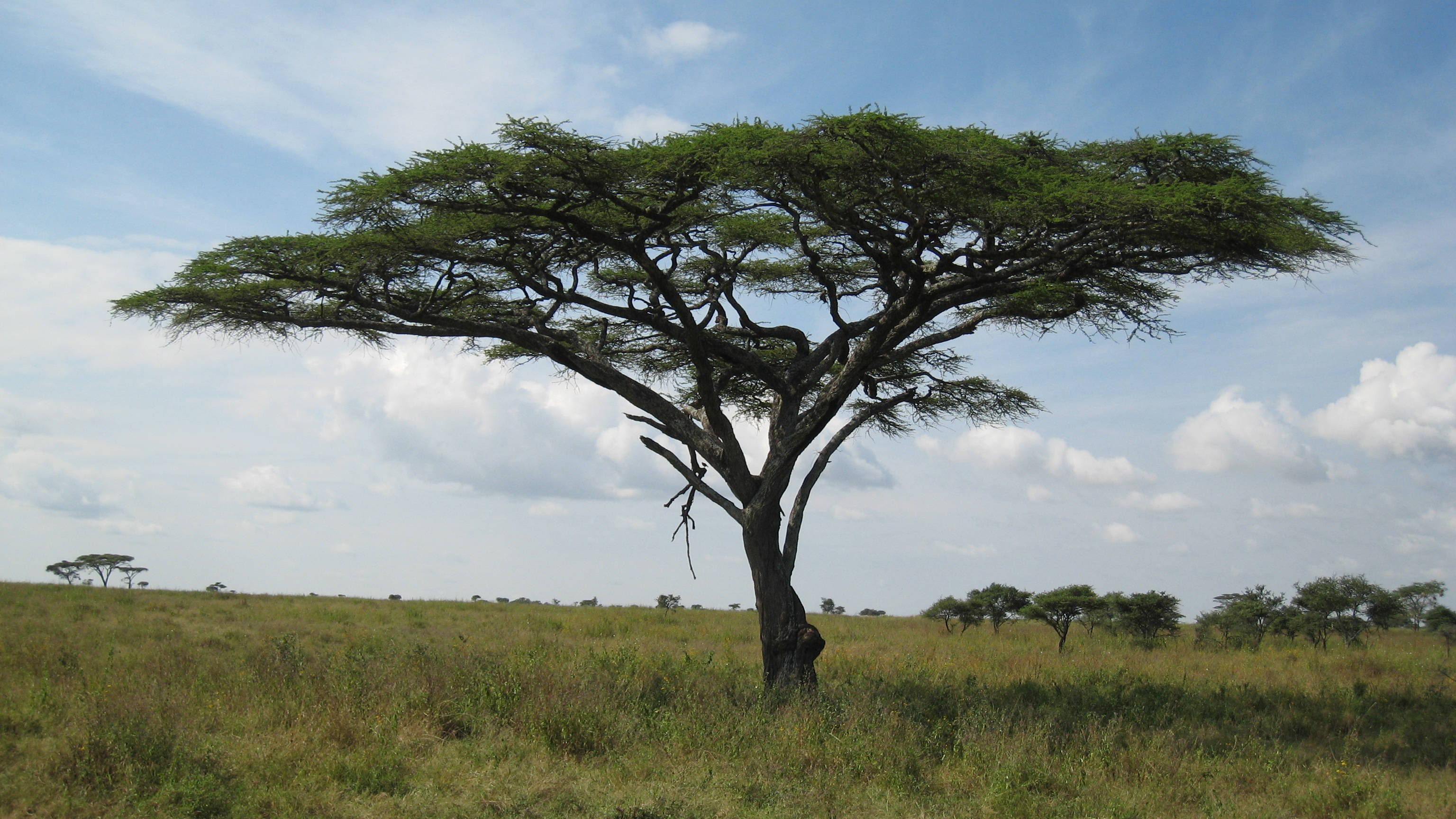
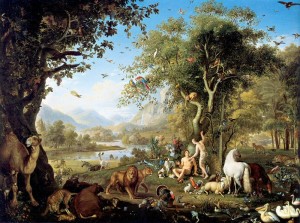
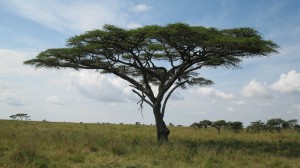
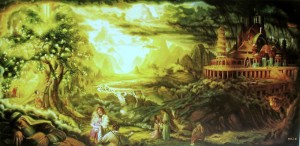
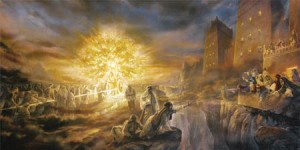
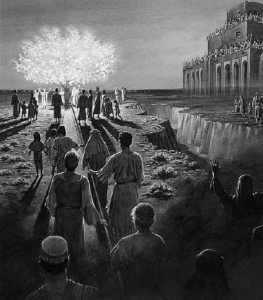
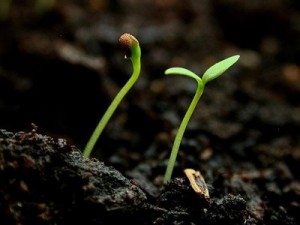



Great three articles, keep them coming Heber.
Thank you Remy!
Excellent study. I appreciate what you said an intend to follow the words of Alma.because i want to see the tree and partake of this fruit freely.hope to see you there.